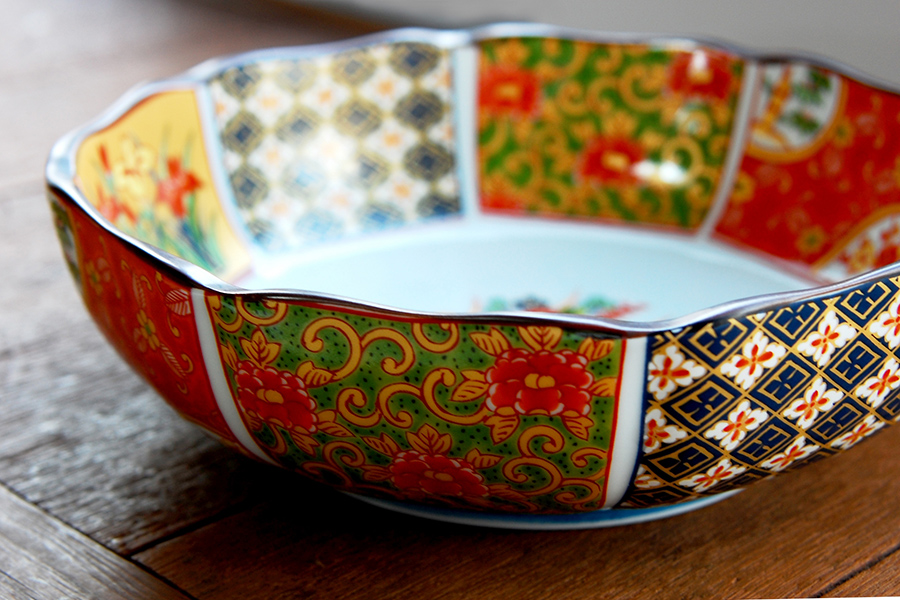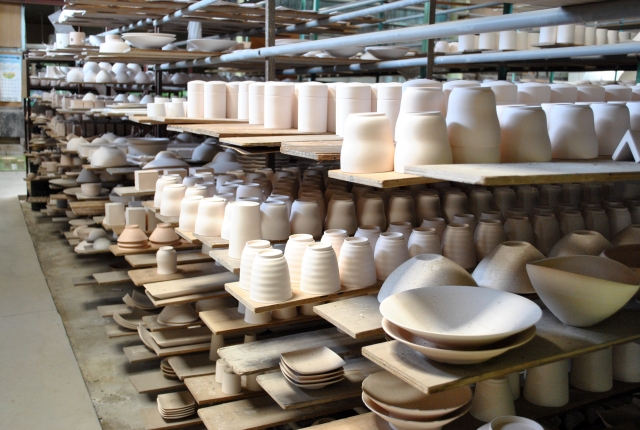How Japanese Crafts Are Finding New Audiences Online
Traditional Japanese art and craftsmanship has fascinated the world for centuries. Today, small and medium enterprises in Japan are adapting to the new e-commerce landscape.
Japanese traditional crafts have long been sought after by overseas collectors for their beauty, durability, and history of being produced using time-honored techniques. These days, however, Japanese art, pottery and keepsakes are not only being sold in
physical showrooms or antique houses only. Many of Japan’s master craftsmen are small-and-medium-sized business owners now looking to leverage cross-border e-commerce to expand to global markets and captivate new customers.
Traditional crafts and techniques in Japan
Japan is a country synonymous with tradition. Many admire the spirit of excellence in craftsmanship, which has been passed on from generation to generation. The country’s 47 prefectures boast more than 236 nationally designated traditional crafts. Traditional techniques employed by highly skilled craftsmen range from pottery and textiles to metalwork and wood crafts, providing great insight into the country’s rich heritage and culture.
Traditional crafts in Japan have been used in daily life for generations. They showcase amazing attention to detail, great care, and techniques that have been refined and passed on to create products that are incredibly long-lasting and durable.
Take the art of sushi making, for instance. To become a skilled sushi chef, imagine the demanding training required! It generally takes a lifetime to master the skills required through observing and apprenticing.
To be designated a Japanese Traditional Craft, there are five criteria it must follow
Traditional crafts and techniques in Japan
Japan is a country synonymous with tradition. Many admire the spirit of excellence in craftsmanship, which has been passed on from generation to generation. The country’s 47 prefectures boast more than 236 nationally designated traditional crafts. Traditional techniques employed by highly skilled craftsmen range from pottery and textiles to metalwork and wood crafts, providing great insight into the country’s rich heritage and culture.
Traditional crafts in Japan have been used in daily life for generations. They showcase amazing attention to detail, great care, and techniques that have been refined and passed on to create products that are incredibly long-lasting and durable.
Take the art of sushi making, for instance. To become a skilled sushi chef, imagine the demanding training required! It generally takes a lifetime to master the skills required through observing and apprenticing.
To be designated a Japanese Traditional Craft, there are five criteria it must follow
- It must be used in daily life
- The most significant stage of its creation is done by hand
- It has more than 100 years of history and is manufactured through traditional techniques passed on through generations
- Raw materials used must also have more than 100 years of history
- It must be manufactured in a certain region and industry

Changing lifestyles and societal needs
The role of traditional crafts began to change due to westernization and the evolution of Japanese lifestyles after World War II. One factor was the demand for convenience and time-saving home appliances driven by the rapid economic growth of the 1960s and 70s. Traditional crafts were no longer treated as items of daily use. Instead, they were often purchased as souvenirs from a trip or as a gift from the region where they are produced.
The change in Japanese consumers’ buying habits coincided with the country’s shifting economic climate. This began to impact the livelihood of Japanese craftsmen and the industry as a whole. According to data from a local craftmanship association, the production value of traditional crafts, which exceeded 500 billion yen (USD 4.5 billion) in 1990, had dropped to one-fifth of the value in 2015. The number of businesses also dropped by half to 1300.
Businesses are adapting to new markets
In the late 1990s, craft makers began adapting to the changing markets with innovative ideas. These next-generation creators started looking for new ways to revitalize their businesses.
For example, Arita is home of Arita-yaki, a popular Japanese porcelain traditionally made in Saga Prefecture, where porcelain was first produced in Japan. By the 2000s, Arita-yaki makers started to produce more contemporary designs. With these, they targeted a younger generation of design-savvy customers in Japan and overseas. They also explored alliances with other brands, creating Arita-yaki bottles for French perfume makers, porcelain tableware for luxury hotels and Michelin-star restaurants and participated in international design exhibitions.
Arita porcelain gained global attention and told an origin story that resonated with discerning consumers in Japan and overseas. Being able to market their products helped – to clearly communicate what makes Arita-yaki products unique from the competition.
The role of traditional crafts began to change due to westernization and the evolution of Japanese lifestyles after World War II. One factor was the demand for convenience and time-saving home appliances driven by the rapid economic growth of the 1960s and 70s. Traditional crafts were no longer treated as items of daily use. Instead, they were often purchased as souvenirs from a trip or as a gift from the region where they are produced.
The change in Japanese consumers’ buying habits coincided with the country’s shifting economic climate. This began to impact the livelihood of Japanese craftsmen and the industry as a whole. According to data from a local craftmanship association, the production value of traditional crafts, which exceeded 500 billion yen (USD 4.5 billion) in 1990, had dropped to one-fifth of the value in 2015. The number of businesses also dropped by half to 1300.
Businesses are adapting to new markets
In the late 1990s, craft makers began adapting to the changing markets with innovative ideas. These next-generation creators started looking for new ways to revitalize their businesses.
For example, Arita is home of Arita-yaki, a popular Japanese porcelain traditionally made in Saga Prefecture, where porcelain was first produced in Japan. By the 2000s, Arita-yaki makers started to produce more contemporary designs. With these, they targeted a younger generation of design-savvy customers in Japan and overseas. They also explored alliances with other brands, creating Arita-yaki bottles for French perfume makers, porcelain tableware for luxury hotels and Michelin-star restaurants and participated in international design exhibitions.
Arita porcelain gained global attention and told an origin story that resonated with discerning consumers in Japan and overseas. Being able to market their products helped – to clearly communicate what makes Arita-yaki products unique from the competition.

From the domestic market to overseas
Taking their family’s multi-generation ceramic-making traditions into the modern age, young entrepreneurs were inspired to develop new products by collaborating with ceramic designers in Europe. They were able to attract customers from overseas thanks to Japan’s booming inbound tourism. After eight consecutive years of inbound growth, Japan received a record 32 million visitors in 2019. And entering the post-pandemic era, visitors have rushed back in droves: 2.3 million foreign tourists arrived in July, the highest figure for any month since 2019..
Since, the global pandemic many Arita-based porcelain enterprises reinvent themselves to continue attracting international customers – by leveraging e-commerce. Today, many international online marketplaces and websites host Arita products and sell to customers around the globe.
Taking their family’s multi-generation ceramic-making traditions into the modern age, young entrepreneurs were inspired to develop new products by collaborating with ceramic designers in Europe. They were able to attract customers from overseas thanks to Japan’s booming inbound tourism. After eight consecutive years of inbound growth, Japan received a record 32 million visitors in 2019. And entering the post-pandemic era, visitors have rushed back in droves: 2.3 million foreign tourists arrived in July, the highest figure for any month since 2019..
Since, the global pandemic many Arita-based porcelain enterprises reinvent themselves to continue attracting international customers – by leveraging e-commerce. Today, many international online marketplaces and websites host Arita products and sell to customers around the globe.

There is similar appetite for other Japanese crafts amongst international consumers, such as beautiful lacquerware, woodwork, makeup brushes, textiles and agricultural products, including Japanese green tea.
The cross-border e-commerce boom is a great enabler in connecting Japanese local businesses to markets worldwide, while offering customers access to these products in better, user-friendly ways. I hope you find your favorite beautiful Japanese craft to add that touch of sophistication to your daily life!
To find out how to pack and ship fragile items, check out our guide here.
For more stories of Asian small businesses shipping local and traditional products to the world, head here.
The cross-border e-commerce boom is a great enabler in connecting Japanese local businesses to markets worldwide, while offering customers access to these products in better, user-friendly ways. I hope you find your favorite beautiful Japanese craft to add that touch of sophistication to your daily life!
To find out how to pack and ship fragile items, check out our guide here.
For more stories of Asian small businesses shipping local and traditional products to the world, head here.
***


















 The Latest
The Latest